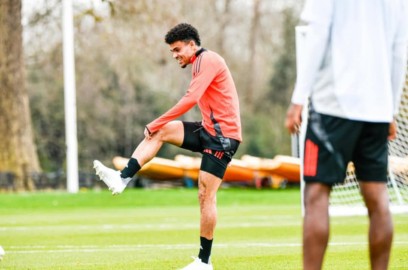
In modern football, speed and agility are essential attributes for players in every position. These qualities determine a player’s ability to outpace opponents, maintain ball control, and dynamically react to the ever-changing game situation. For ambitious footballers who aim to improve every day, here’s a comprehensive guide to exercises that enhance these critical skills.
The Importance of Speed and Agility
Being fast and agile on the pitch is not just an advantage – it’s a necessity in high-level competition. A fast player can execute a successful counterattack, while agility enables one to evade pressure and handle the ball effectively in tight spaces. Training these attributes requires a strategic approach, combining physical development, reflex training, and game awareness.
Top Exercises to Improve Speed and Agility
1. Short-Distance Sprints
Short, explosive bursts of speed are crucial in football. These exercises enhance power and the ability to accelerate dynamically.
How to do it:
- Distance: 20-30 meters.
- Sprint at maximum effort, then rest for 30-60 seconds.
- Repeat 8-10 times.
- Focus on a quick start and maintaining proper running technique.
2. Ladder Drills
Using an agility ladder improves foot speed, balance, and coordination.
Example drills:
- "In-Out Steps": Move your feet quickly in and out of the ladder rungs.
- "Single-Leg Hops": Jump on one leg through the ladder, alternating legs in subsequent sets.
3. Change of Direction Training
Football players must quickly change direction to outmaneuver opponents or intercept the ball.
Drill:
- Set up 5-6 cones in random intervals.
- Sprint between them at full intensity, making sharp directional changes.
- Keep a low body position to maintain balance.
4. Plyometrics: Power and Explosiveness
Plyometric exercises boost leg strength, translating to better sprints, jumps, and reactions.
Examples:
- Box Jumps: Perform explosive jumps onto a sturdy platform, returning to the starting position.
- Lateral Hops: Jump side-to-side over a low obstacle, working on leg strength and balance.
5. Ball-Integrated Training
Incorporating the ball into drills ensures that skills transfer directly to match scenarios.
Example exercises:
- Slalom Dribbling: Navigate through cones at high speed, keeping the ball close to your feet.
- Sprinting with the Ball: Sprint 20-30 meters with the ball, followed by a sudden stop or direction change.
6. Reflex and Decision-Making Training
Agility also includes the ability to quickly respond to environmental cues.
Drill:
- A coach signals directions (visually or verbally). Your task is to react instantly – sprint, change direction, or stop as instructed.
Sample Weekly Training Plan
Monday:
- Warm-up: 10 minutes of light running and dynamic stretching.
- 10x20-meter sprints.
- Ladder drills for agility.
Wednesday:
- Plyometric exercises: 3 sets of 10 box jumps.
- Change of direction drills with cones.
- 4 sets of slalom dribbling with the ball.
Friday:
- Interval sprints: 6 rounds of 30-second runs at 80% effort, with 1-minute rest.
- Small-sided games (1v1 or 3v3) to work on agility and decision-making.
Sunday:
- Light ladder drills.
- Stretching and recovery.
Recovery – The Key to Progress
Proper recovery is as important as training itself. Ensure you get enough sleep, stay hydrated, and maintain a balanced diet. After intense sessions, incorporate recovery techniques such as stretching or massage to help your muscles rebuild and grow stronger.
Conclusion
Speed and agility training demands consistency, commitment, and a structured plan. By focusing on these attributes, you will gain an edge on the field – becoming more dynamic, harder to stop, and better prepared for competition at the highest level.
Every day is an opportunity to become a better footballer. Let training become your daily routine, and the results on the pitch will exceed your expectations!





